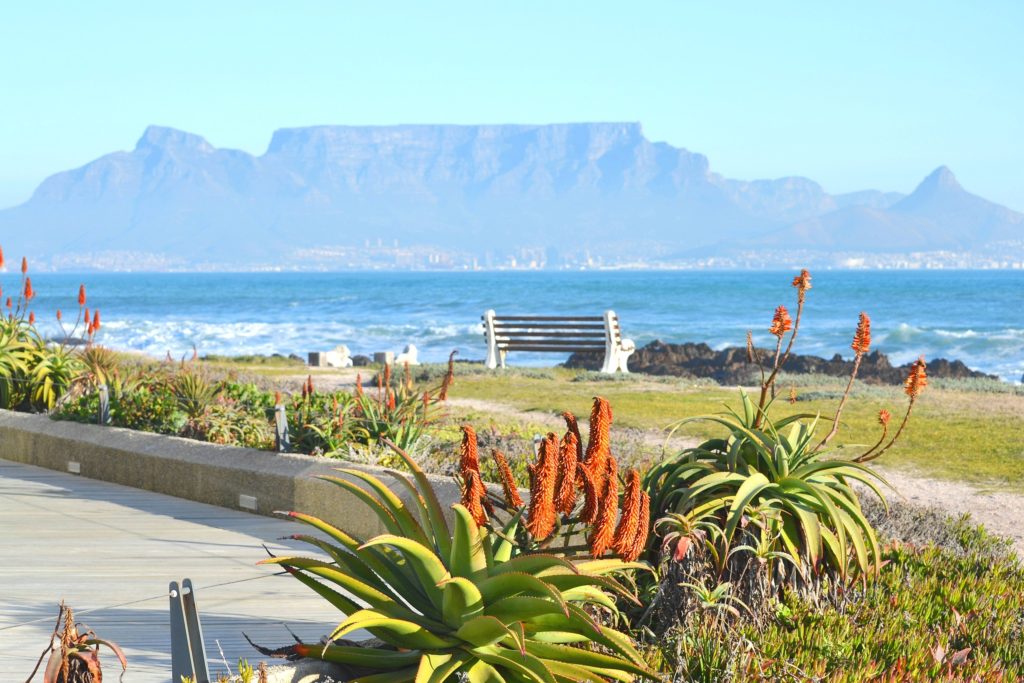Cape Town has the hustle-bustle of a major city combined with quiet spaces of beauty.
The world is filled with wonderful cities — with soaring buildings, bridges and monuments; street hustle and bustle; theater with luxury dining afterward; museum viewings, urban hikes, memorable romances, — the pastrami! (sorry, I was back in New York for a moment), and so forth and so on. How can any person come to an objective conclusion on the best city to visit? This is a subjective evaluation we all get to make for ourselves. No one has the universal criteria, or algorithm, to sweep all the vastness of the world’s cities into ten boxes and say: “This city here is the best; this other one over there is second best, ….” The top ten rankings may be true for this or that criteria or to the persnickety reviewer; but not for the rest of us. The choice city and it’s allure is as varied as the number of travelers. A master list makes no sense. Yet, whether through arrogance or anal retention; many, many lists exist with specific ratings and rankings.
These city rankings are all over the map (is that a pun?) The eight-hundred pound gorilla of “best of” lists for well, just about everything, are the ubiquitous ”best of” rankings of the U.S. News and World Report (recently renamed to US News). There is an ugly rumor afoot that U.S. News is busy devising a ranking system to evaluate the varied ”best of lists” out there – they are rank in every meaning, including foul or an unpleasant smell. With just a glance at “best city lists” it is obvious that the rankings are wildly contradictory. The kicker is that some of these lists do not reveal the basis for the determinations.
Watch this ranking chaos unfold: The top three cities in 2020. Here we go — From U.S. News: The number one place to visit is New York; number two is Paris; and three is London. From Forbes magazine: 1.) San Francisco 2.) Amsterdam 3.) Manchester, U.K. The next list of truth comes from Planetware.com This outfit is cooperative of tourist writers who have monetized themselves into literary tourist operators: 1.) Paris 2.) New York 3.) London. Global Finance, an international finance magazine, written in English, heralds: 1.) Tokyo 2.) London 3.) Singapore. Based purely on the number of visitors, EuroMonitor lists: 1.) Hong Kong 2.) Bangkok 3.) London. The insanity continues. According to Lonely Planet, the leading tour guide, the best in 2022: 1.) Aukland 2.) Taipei, Taiwan 3.) Freiburg, Germany. Readers can pick any city from any list and take comfort that they have picked the best.
These rankings drive this author crazy; they are as stupid as the day is long. So naturally, the author is going to throw his own utter nonsense into the ring. This article will prove that there is only one city that truly is number one. This new contender is a crowning urban glory; but not included in the gibbering lists that recycle the usual urban suspects. That new hot spot is Cape Town, South Africa.

Before we go any further, let’s address one reservation that keeps many away from South Africa: crime. Understandably, some people cringe at the thought of visiting South Africa. True, Cape Town has a high crime rate. Yet, crime in Cape Town is a tale of two cities. As quoted in drivesouthafrica.com: “As one Cape Town tourist puts it; ‘Cape Town is safe enough if you take precautions. There are really two cities here, but the crime stats blend them together. The poor communities of the Cape Flats see 95% of the crime while the city centre and suburbs are pretty safe in terms of violent crime.’” Just like all the other major cities around the world; Cape Town is safe, if visitors take universal travel precautions.
The author lived in Mexico and it was safer than his native New York City. As an analogue to Cape Town, consider the Mexican model of crime and punishment. Nobody should step foot in Mexico from the violence and mayhem broadcast in newspapers. Most of the Mexican violence is against Mexicans and is related to the drug cartels. Avoid drugs and you avoid crime. This does not deny that all the crime stories are all true as to those victims. However, as a percentage of tourists, crime affects a very tiny fraction. In 2020, Mexico had twenty three (23) million tourist visits. The percentage of those many millions were victims? — an extremely low number. A tourist needs to follow the straight and narrow in Mexico: as mentioned, do not do drugs, avoid gambling, whoring around, etc.; shy away from bad neighborhoods, travel safely at night; and for goodness sakes, leave those expensive toys at home! The person who trailers in their ATV or jet ski, is advertising their future victimhood.
Surprisingly, Mexico is safer than many U.S. cities: “Travelers feel relatively safe visiting popular U.S. cities like Miami, Philadelphia, Chicago, New Orleans, Washington D.C, or Atlanta. Visitors from around the world enjoy these vibrant cities in relative, reasonable safety. Yet each of these cities is statistically less safe than Mexico.” (howsafeismexico.com) Other conflicting stats are out there. Here is the travellers truth: Tourists are safer in Mexico than the United States IF they stay away from Mexican crime-ridden neighborhoods, and don’t do anything stupid. The same is true in South Africa. Be smart and be safe. The author traveled extensively in South Africa and was met by kind people everywhere. Cape Town, and all of South Africa, is a pretty safe place for tourists.
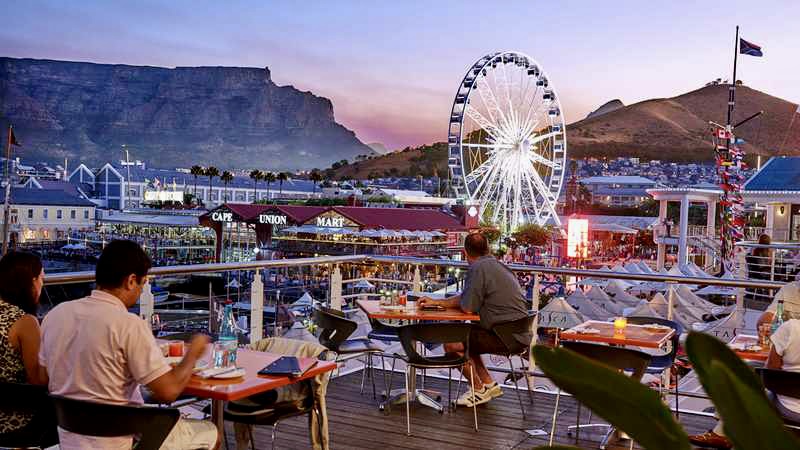
The Winner of the “Most Alluring City Pageant”: Cape Town, the Number One City in the World
This jaded author had heard, and seen it all; well, just about all — especially the endless travel chatter about the best city. The author missed a few major contenders, but has triangulated from New York, to Mexico City to Istanbul, and beyond. This author has been “down and out in Paris and London”, to plagiarize the title of George Orwell’s book. The travelers’ shibboleth (a standard doctrine, often repeated, but outdated) is that Paris is the Holy Grail of cities. To many, in an urban beauty contest, Paris wears the sash — the winner of the ”MIss Best City Pageant.” This is not true. There are two finalists: Paris AND Cape Town. This author has been to both cities. Rating Paris versus Cape Town is like comparing apples to dinosaurs. Paris is a metro delight filled with well, everything urban – plus the scenic River Seine, architectural grandeur, and the Eiffel Tower; all wrapped up in a croissant. If travelers want urban adventure mixed with the bustle of a big city, all mixed with a little city grime – then head straight to Paris. But the judges are unanimous for travelers who want an eclectic city with unbeatable urban beauty; vibrant, diverse cultures; drop-dead gorgeous, lush environment; surf-safari beaches; and a national park in the city center. Take the express A-Train and travel non-stop to Cape Town South Africa. Cape Town is famous for its beautiful neighborhoods, incredible ecological diversity, stunning landscapes, and rich culture. Note for an ugly contrast, the review of the Business Insider, an international, nosy-parker newspaper: Cape Town is the twentieth (20th) best city. Wrong.
Cape Town is a Recipe for Success: A Cook’s Tour
If Cape Town is a meal; it is not some urban melange, flash cooked in a sizzling pan. Rather, this city needs a slow cooker. Readers can cook up Cape Town. Here is the recipe so readers can make their own Cape Town. Copy down these directions taken from the Urban Planning Cook Book [Southern California edition. Copyright by Zephyr Carlyle]
Here is a Sample of a Well Done Cape Town (Suburban View)

Recipe. First, place side-by-side ten beautiful Southern California coastal towns. Pick any ten, such as La Jolla, Del Mar, Encinitas, San Juan Capistrano, Newport Beach, Redondo Beach — cooks’ choice. Throw in a couple of relatively low-rent districts such as Oceanside or Oxnard or Long Beach; or heck, even Solvang. Double the size of these towns and squeeze them together, then reduce their income by half as you drop the squished towns into the slow cooker. Toss in a huge slug of ethnic energy, and sprinkle in just a little urban sprawl. Make sure the front side of these towns face the most colorful and bountiful ocean. Now, pinch the business end, the back office, right into a small slice of Yosemite. Let this urban stew marinade while it slowly cooks: starting from the tribal roux through colonialism stickiness. Let the rebellions boil over. Whisk as fast as you can to get past that horrid-smelling apartheid stage. Eventually, you get the aroma of a peaceful democracy. Voila! That’ll do it: Cape Town. And it is delicious hot or cold.
Description of Photograph Above. Ahh, Cape Town. View of Oudekraal Beach just outside the city. On the right is the cloud-covered Twelve Apostles, next door to Table Mountain National Park. The summit of Lions Head is on the left side. On the far side of Lion Head is Table Mountain National Park; located smack dab in the middle of the city, but not visible in this picture. On this side of Lions Head is suburban Camp Bay, a very affluent section. Greater Cape Town surrounds Table Mountain.
Think the Author Got The Recipe Wrong? Here, He Will Whip Up a Batch
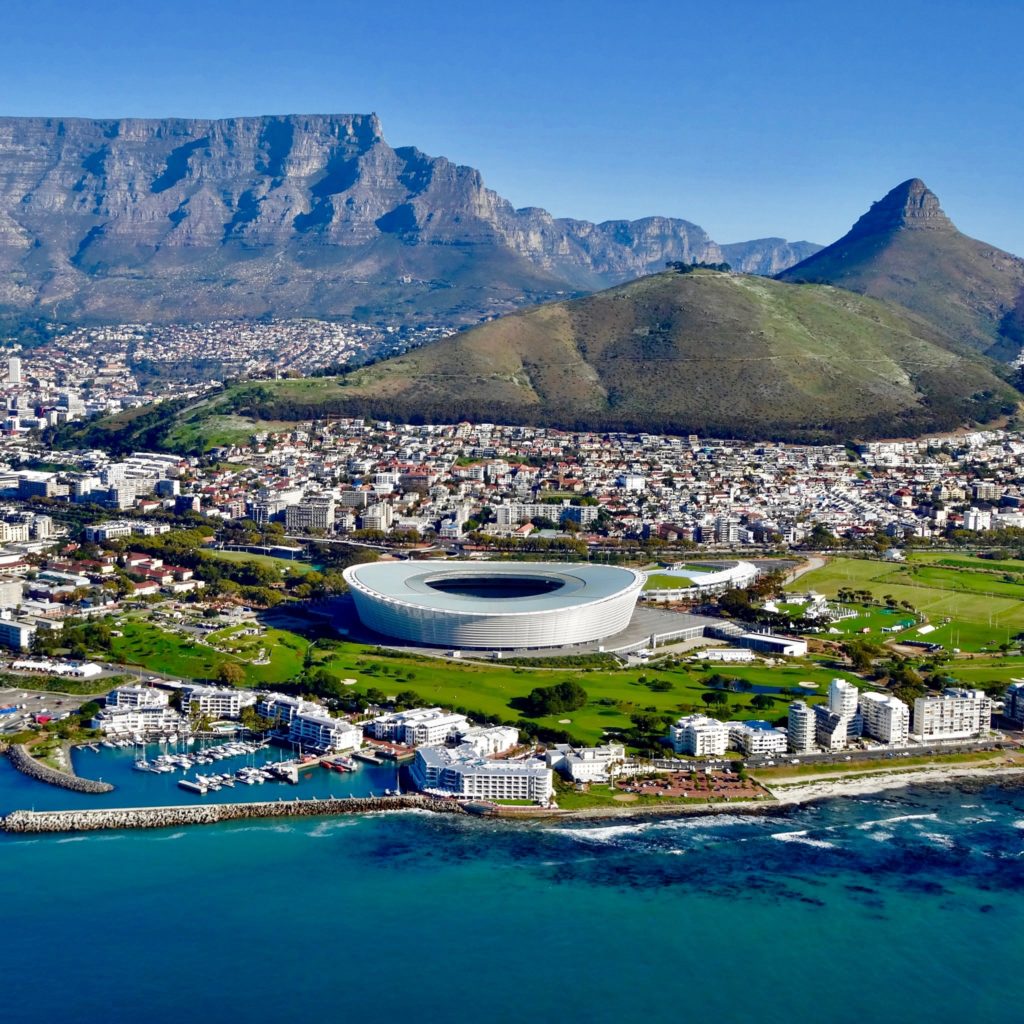

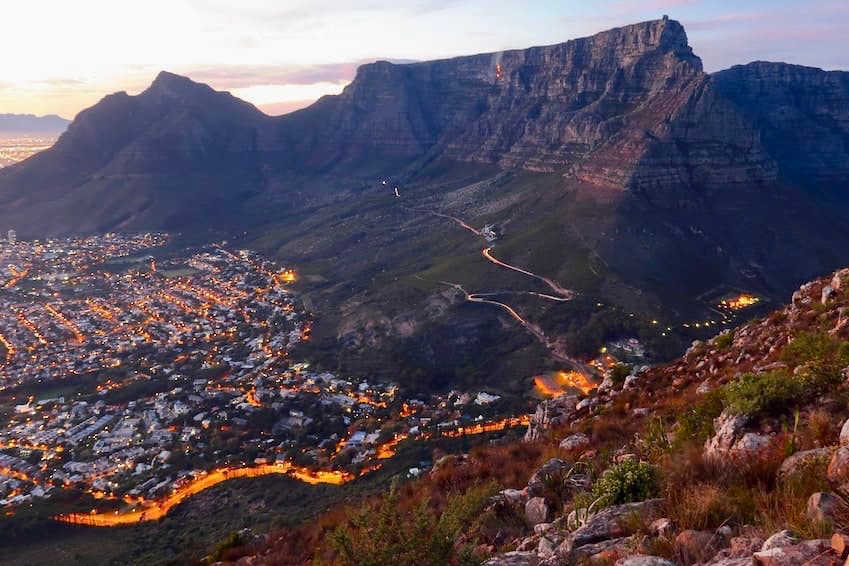
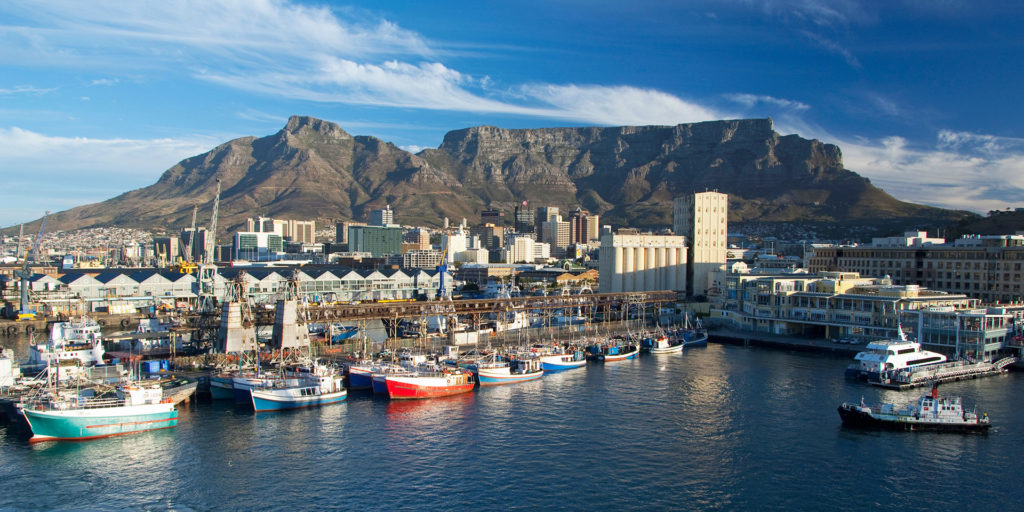
The city has a eclectic mix of neighborhoods that reflect its diverse cultural heritage. Below is an combination of neighborhood beauty and colorful history:
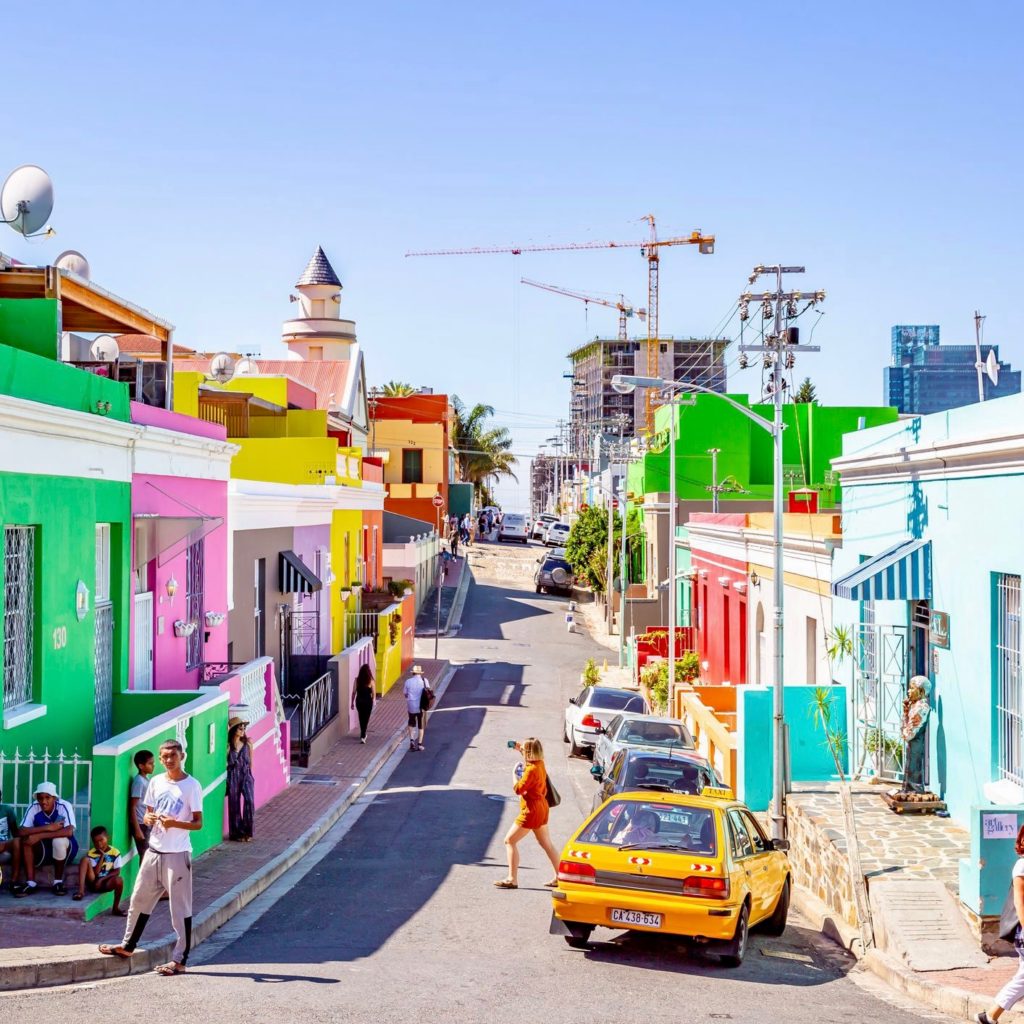
Do not get the idea that Cape Town is some small, quaint city. The base of Table Mountain is on right:
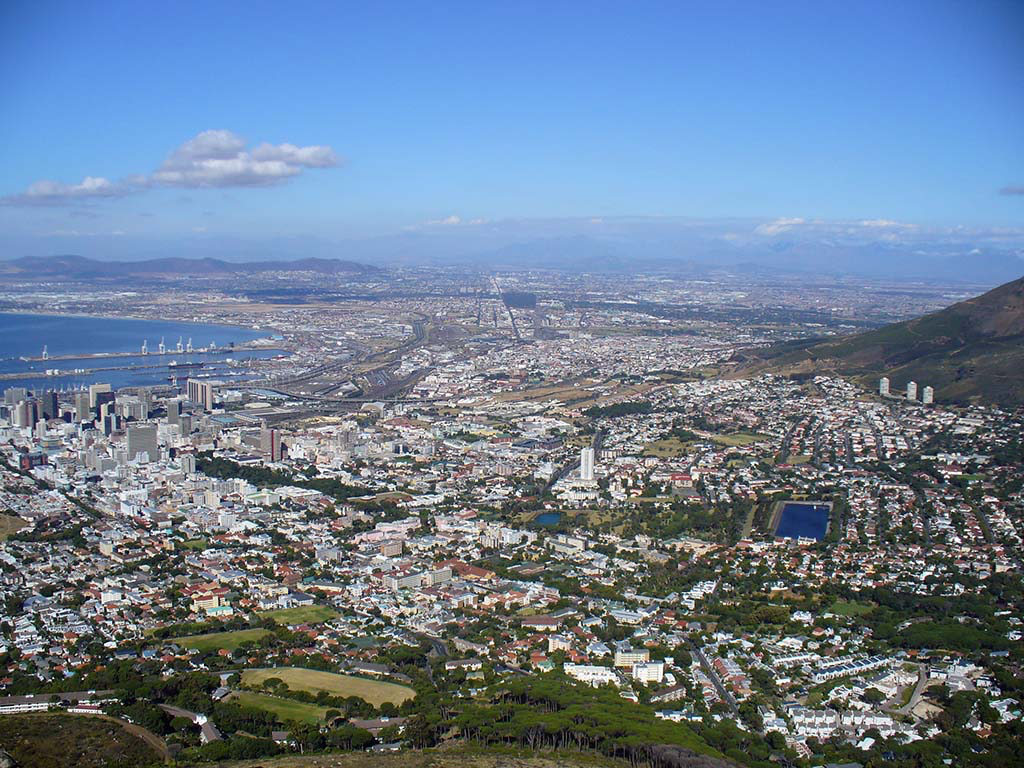
Enjoy the Local Flora and Fauna


The penguins of Cape Town are just a tip of the iceberg; the cutest example of a mind-boggling array of animals and plants. This city is located in the Western Cape Province. This whole region is one of the few places on earth with a Mediterranean climate — similar to the climate in Southern California; and well, the countries ringing the Mediterranean Sea. This climate is very hospitable to plants, animals and humans. Therefore, it is not surprising that penguins have to share Cape Town with other cute and cuddly animals:
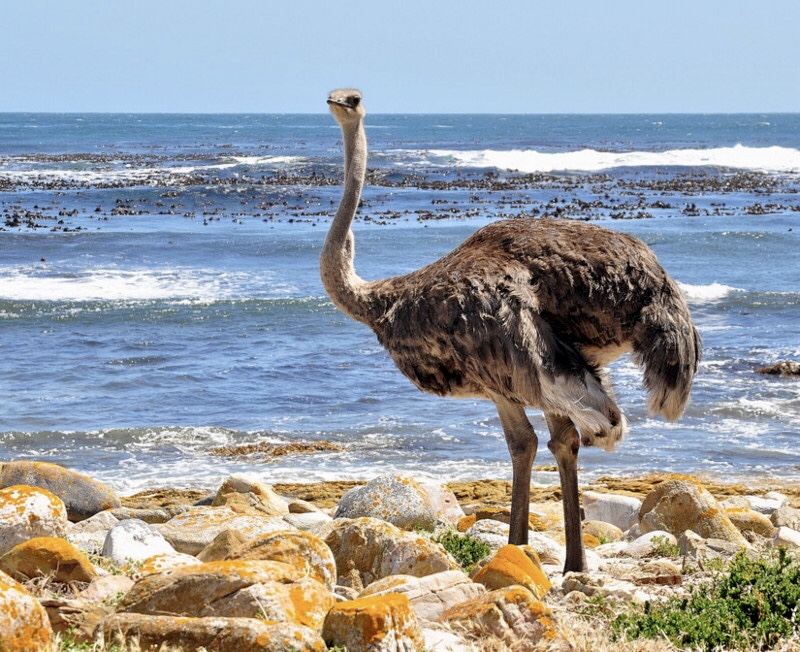
The Atlantic Ocean offers other animal watching great escapes. Cape Town offers day-trip shark tours and and whale-watching photo safaris. Longer excursions are also available. And to think, Amero-Europeans have to pay good money to visit animal theme parks.
Cape Town has a beautiful coastline, including expansive beaches: some with fluffy sand; others with rock outcroppings and big tide pools. Some urban neighborhoods run right into the beach. While visiting, this author changed locations to an area of Cape Town new to him. Wanting to check out the scene, he left his new hotel and and strolled past a charming, pulsating neighborhood. After a five minute walk, the author stopped dead in his tracks. The city street abruptly ended at the beach front. He peered at the horizon, admiring the bluish-gray Atlantic. When the author looked down, he was greeted by a shoreline filled with endless stacks of sea shells. Back home in Southern California, the locals and tourists would have stripped the beach clean and emptied the tide pools.
This author took in the full coastline, all littered with shells and other washed up marine life. The shells ranged from the mundane clam to the most prized collector conch. The author collects sea shells. To reach some distant shell treasure, he had to crunch many shells under foot. He felt terrible about crushing these beauties. He then looked around, left and right. The author saw innumerable shells resting comfortably in the sand. He crunched, crunched, crunched forward, collecting limpets along the way, Finally, he captured the Golden Fleece of sea shells: a huge trumpet triton.

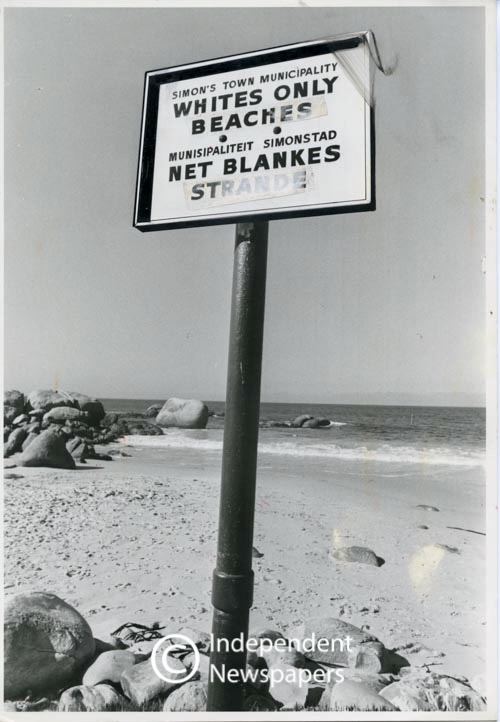
All Cape Town beaches are now open to the public. This open air policy compensates for the aggressive, oppressive apartheid beach segregation. And guess which beach was designation for the Black community? — the crappy Monwabisi beach far away. The ultimate beach cruelty is that the road to the beach had low overpasses. Local buses were blocked from reaching that beach. Few Blacks had cars. Commonly, Blacks would walk to Monwabisi.
Visitors can hit the Cape cocoa-butter circuit and lounge around on beautiful beaches. They also have a multitude of local ocean opportunites: surfing, scuba diving, recreational fishing, etc. PADI, the world’s largest scuba certification program, sums up the oceanic sizzle: ”The diving in Western Cape is some of the most exciting in the world. It certainly is one of the top 5 places to cage dive with great white sharks, but the underwater environment also offers much more than tremendous sharks.” Surf’s up in the Cape along with every other marine adventure.
Meanwhile, the flora is just as stunning as the fauna. Tropical flowers abound in every corner. Orchids grow up from the sidewalk. Back home, many of these plants only grow in commercial hot houses.
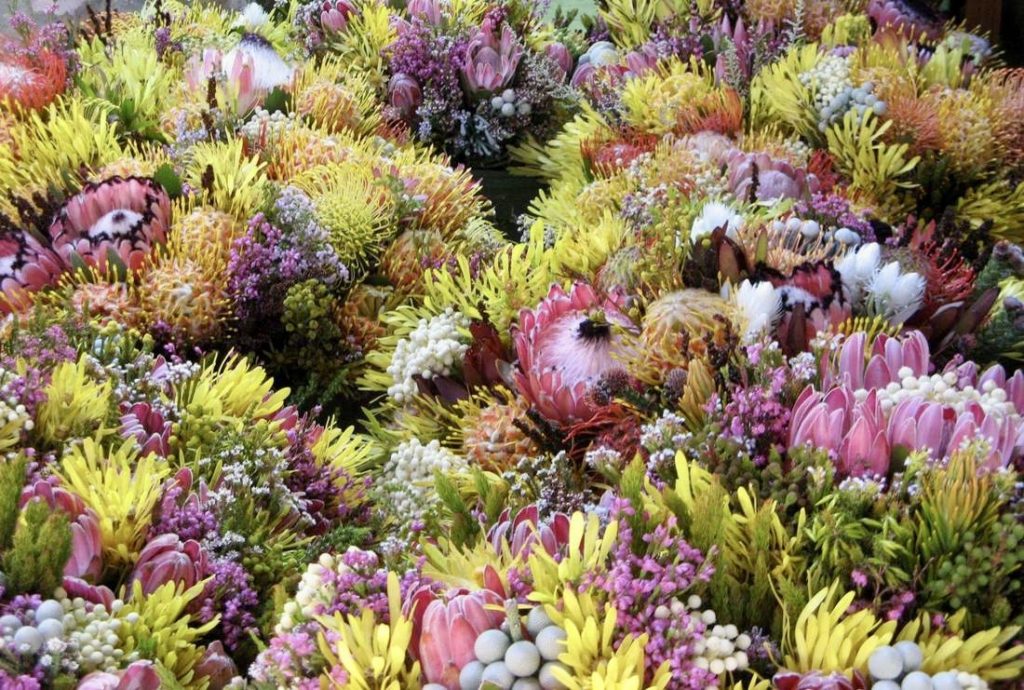
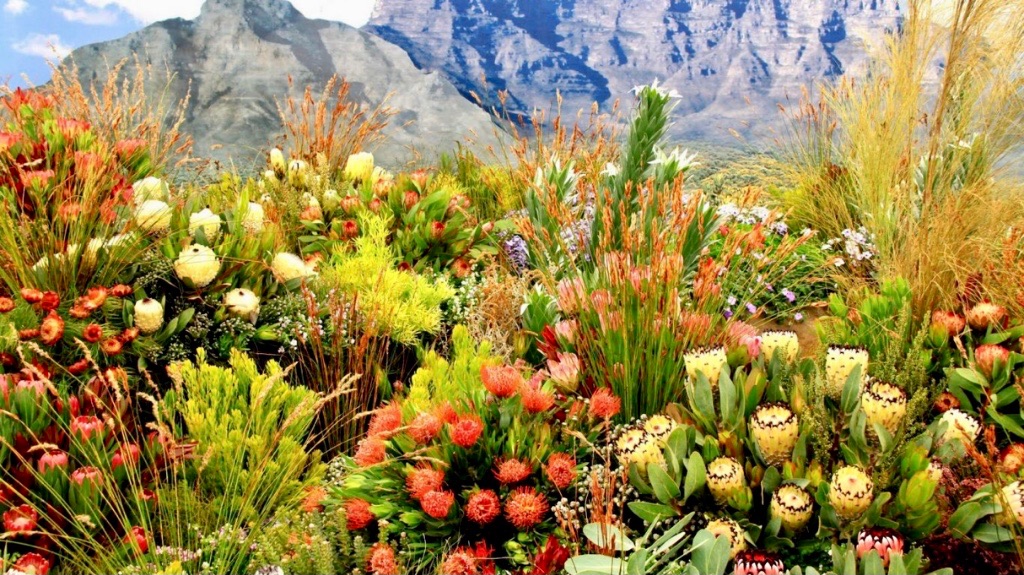
But… The Beauty of Cape Town Belies Its’ Ugly Apartheid Heritage
Visitors can learn of the most shameful events in Cape Town’s apartheid past by visiting the poignant museum, District Six. Just in case: Apartheid was government policy from 1948 to 1994. Different races and ethnic groups were forcibly segregated in every way, including housing, schools and employment. Most of Cape Town was designated as a “Coloured labour preference area.” [U.K. spelling of ”colored”.] Over half of the local residents were considered to be mixed race or ”coloured.” Any and all mixed race inhabitants were thrown into the same apartheid dumpster labeled ”coloured people”. Other Cape Town groups were tossed into different racial/ethnic bins. Each group was given their own residential area. Even Jewish residents were segregated (once again.) The Jews were given the Green Point section. The government forced all others out of Green Point. This pattern of forced segregation was repeated throughout Cape Town.
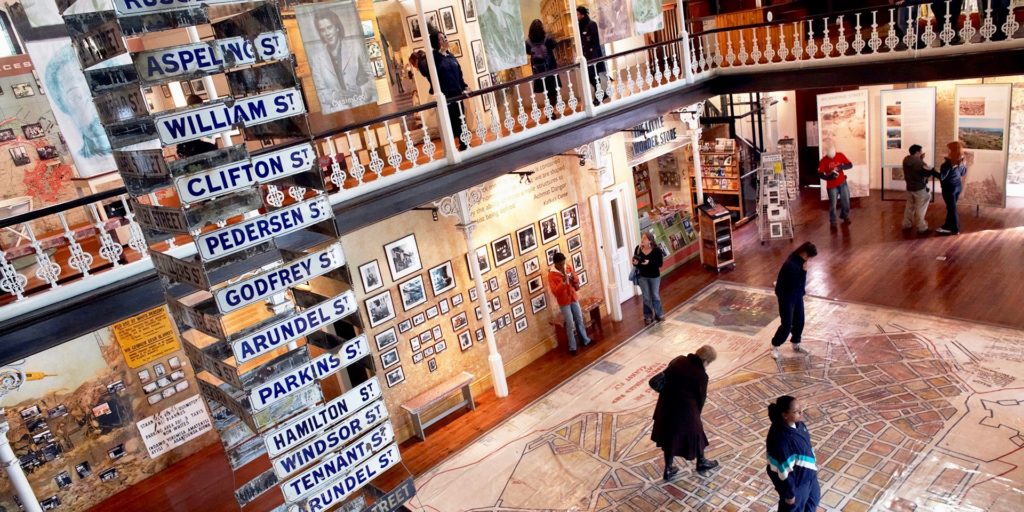
District Six was an exuberant and bawdy neighborhood of freed slaves and laborers. This neighborhood was an eclectic mix of many cultures and people. Under apartheid, all of District Six was originally designated as “Coloured.” In 1966, the government declared District Six as a “white only” area. More than 60,000 people were forcibly evicted from their homes. The displaced were sent to live in the dismal, under-serviced Cape Flat area. Think no electricity or running water.
Many Cape Town African natives are from the historic, dominant local tribe: the Xhosa. The Xhosa and allied tribes arrived at the latest in the 16th century, and probably long before that time. Some of the Black residents are the Khoi or San. The last two groups are the aboriginal ”bush people.” The bush people are the original inhabitants going back for millennia, long before the Xhosa muscled in. Under this brutal system, African natives became “temporary workers” in their home city. They had to carry transit papers just to stay in Cape Town. Blacks would be subject to arbitrary police detention; often roughed up while authorities checked for transit papers. African natives would be detained if caught doing something as innocent as walking down the street to get home.
Every Cape Town racial group had its home turf, except for the Blacks. The black denizens were subject to the most cruel practices. This oppression covered even long-time residents, including Black families that had lived in Cape Town for many generations. All Blacks, recent or ancient arrivals, were artificially assigned citizenship in the poorest regions of South Africa. These far-flung areas were set up as apartheid native reserves, called “homelands” One technical hitch was that the vast majority of Cape Town Blacks had never stepped foot in their newly ginned up ”ancestral homeland.”
A Glimpse at South Africa’s Second Most Beautiful City – Durban
Background. There are five major cities in South Africa: Cape Town, Durban, Johannesburg, Pretoria, and Bloemfontein. This author has spent time in each city, but two of them entailed only brief visits. This city constellation allows South Africa to have three capitals; and it is the only country so organized. The national government is spread out among three cities. Cape Town is the legislative capital (Parliament). Pretoria is the executive capital (President and executive agencies). The judical capital is Bloomfontein (Court system including the Supreme Court of Appeal). Note: South Africa’s highest court is the Constitutional Court, but this court is limited to hearing constitutional cases. The Constitutional Court is in Johannesburg. Thus, four out of five Big Cities get a bite out of the national government apple. This tri-part, tri-city system (excluding the singular Constitutional Court) is less confusing than the prior arrangement. This author remembers when, not that long ago, South Africa had only two capitals: Pretoria and Cape Town. All branches of government (legislative, executive and judicial) were consolidated into one city: Simple. However, the the capital city rotated every six months. For half a year, the entire national government operated out of Pretoria. After six months, the government decamped from Pretoria. The whole governmental kit and caboodle shuttled down to Cape Town. Every year, all federal functionaries got to enjoy the summer in breezy, pleasant Cape Town, before marching back to Pretoria.
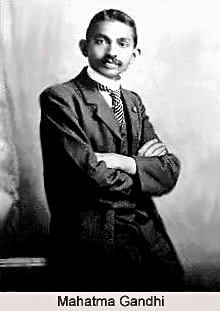
Durban’s most famous resident. In 1893, a twenty-three year old Mahatma Gandhi sailed from India to South Africa. Gandhi lived in Durban on and off for twenty one years. HIs life path started out as a dapper attorney in Durban. In this city, Gandhi developed his ideas for using civil disobedience and non-violence to provoke social justice. Durban was his incubator. Gandhi learned how to turn his ideals into action. In Durban, and later throughout South Africa, he organized and led non-violent protests and strikes; created collective farms; and fought imperialism in ways big and small —all to improve the lot of oppressed minorities.
Unfortunately, Durban is the only major city that lost out in this Capital City Wheel of Fortune. However, it is a unique city and none the worse for not hosting some bloated government bureaucracy. Durban is on the other side of the country from Cape Town, and borders on the Indian Ocean. Durban is filled with historic, quaint neighborhoods, Indian Ocean vistas, and actual Indians. Durban has the greatest concentration of people of Indian descent in Africa – over one million. Almost 25% of Durban’s population are Indians or of Indian descent (World Population Review). According to the World Economic forum: “Durban is sometimes called the ‘largest Indian city outside of India’ – but this claim has not been determined conclusively.” There are other links connecting Durban back to India, including Mahatma Gandhi in his formative years, as set out above.
There is one other, less world-shaking item associated with Durban: local cuisine. And nothing says Durban more than some good old bunny chow:

Most people look at bunny chow and exclaim: ”What? No self-respecting rabbit would eat this!” True enough. Actually, the name originated from a cook named Bunny. One night, he had a lack of ingredients to make meals for his restaurant customers. Bunny used what he had at hand: bread and curry. The rest is Durban history.
Here are the directions to prepare Bunny Chow. Write this down next to your recipe to make Cape Town. First, take a rectangular loaf of white bread, not sliced. Cut loaf in half. Place the half loaf on its side, tall side up. Scoop out the inner parts, leaving just a bread shell. Stuff with curry. There, done to perfection. The author always wondered whatever became of all the bread guts? Recycled into bread pudding; toasted and crushed into bread crumbs; or was the left-over bread the stuffing inside bed pillows?
Now, is Cape Town the best city in the world? You decide.
Shameless Plug. Please consider signing up for a FREE subscription to this website which is both a travelogue and literary journal. Notices of new postings, about three new articles a month, will be sent to your email inbox. Note: Your information will never be marketed, sold, or used in any way. The marketing of personal data is a horrible idea.
